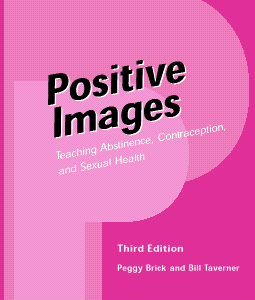by Robin Slaw, Sexual Health Educator/Trainer, The Center for Family Life Education
As a Sexual Health Educator/Trainer for the CFLE, I travel across northern New Jersey, presenting on a variety of topics. I am always glad to have the opportunity to interact with students or adults when I go to schools or health fairs and the reactions, questions, and insights that our presentations bring on from the audience are always interesting. These interactions make me so grateful I do what I do; however sometimes the questions and comments can amaze me. This is is a little bit of what Robin “Saw”…
Last week I presented for a high school leadership program in northern New Jersey. I really enjoy the teens in the program; they are refreshingly honest and open, working very hard to keep out of trouble, survive in an urban school, and find ways to be successful. Many of them are lucky enough to have involved parents, and the leadership program offers them a place to hang after school where they can get homework help and have presentations on topics that make a difference in their lives. Usually I see them about once a month.
they can get homework help and have presentations on topics that make a difference in their lives. Usually I see them about once a month.
On this particular occasion, I was presenting a program on stereotypes. During our discussion, we talked about how important communication is and discussed our perceptions of ourselves and how others perceive us. We were working our way through some stereotypical statements and how we felt about them, when we ran into some gender challenges (e.g., “Girls who wear short skirts are asking for sex.”) This brought about quite the heated discussion. And then we slammed into the biggest challenge of all: “Boys should never say no to sex.”
The argument was heated enough just sorting through the ideas of why they think guys and girls are different or not when it comes to sexual expression. Here, I had them break down the meaning of “dirty” because one young gentleman replied that he would only say “no” to sex if the girl was “dirty”. It’s always dangerous to make assumptions working with students in poverty, so I asked what he meant by “dirty”. First he replied, “Well, bad breath, Miss. Smelly hair. That kind.” Amidst much laughter, he threw in, “And blue waffles. I couldn’t do blue waffles.”
Hmmm. Blue waffles???
“Now, had I not just heard this term, I would’ve been stumped. But, this was actually the second time in just over a week that I had heard someone mention blue waffles. However, this urban school district was far removed from the last place I had heard this term – my car.”
Driving my daughter and a friend home from their own sexuality course, I listened to their conversation in the backseat. (Moms are always invisible when chauffeuring teens and children.) They talked about what topics might be covered next, and the friend exclaimed, “As long as we don’t have to learn about blue waffles, I am ok.”
My daughter was intrigued, and I was stumped. When she tried to ask her friend, the friend refused to describe what blue waffles were, and told my daughter to look it up online. When my daughter couldn’t find anything, she asked me for help, and, my goodness, I’m glad she did! We found a picture illustrating what blue waffles were, and after I hauled my jaw back up off the floor, what followed was a wonderful teachable moment.
We were able to discuss sexually transmitted infections (STIs), how we can protect ourselves, and how most people don’t experience any symptoms when they do have infections. We also talked about scare tactics and how they don’t work when teaching teens about STIs, despite the penchant among some educators to show the most graphic, vile images they can find.
What was even more amazing was how viral the term had become among high school students. Not surprisingly, few adults knew about the term. And with the more adults I asked about term, I realized I was not the only adult not in the “waffle know.” None of the adult advisors at the teen program had heard about blue waffles, and none of my work colleagues had, either. But, all the high school students in the leadership program knew exactly what the young man was talking about, and amidst gleeful shrieks of “EEEEeeeewwww” and a small detour into STIs, we managed to complete our discussion about stereotypes.
I am left pondering the ways that we teach adolescents about sexuality. They are exposed to so much more than I ever knew at their age; they are so sophisticated in so many ways, yet are still wide-eyed children in many other ways. How savvy we need to be as educators! I wondered: was it a good thing that I’d already known about blue waffles before this week’s conversation? Maybe … otherwise I might have needed a few minutes to collect myself after viewing the image for the first time! How can we keep up with changing slang terms and terms that travels faster than we can learn them?
I will be taking back another lesson on STIs next month. Perhaps I’ll bring in my laptop and show them the amazing Planned Parenthood Behind the Figleaf (http://www.plannedparenthood.org/teen-talk/watch/am-normal-behind-fig-leaf-26794.htm) website, so they can see some normal and healthy genital drawings and answer the perennial question, “Am I Normal?” And I will continue to be grateful for access to accurate information on sexuality from organizations like Planned Parenthood who work hard to keep teens safe!




Unfortunately as a sex educator (college level), I thought I ought to find out what a blue waffle was. Even more unfortunately, I went to the photo link rather than the wikiword one. I do not recommend the photo!
Someone made a 1:20 video of people’s reactions to seeing the photo which is pretty funny. The song is kind of risque, but the reaction shots were a good debrief! -Amy in WI
http://www.youtube.com/watch?v=M26Gwkxx5QM
I was looking for this information, thanks for put in this easy way, I mean in a easy way to understand it and explain it to my child jajaja, well until the next time.